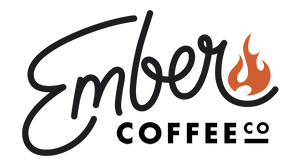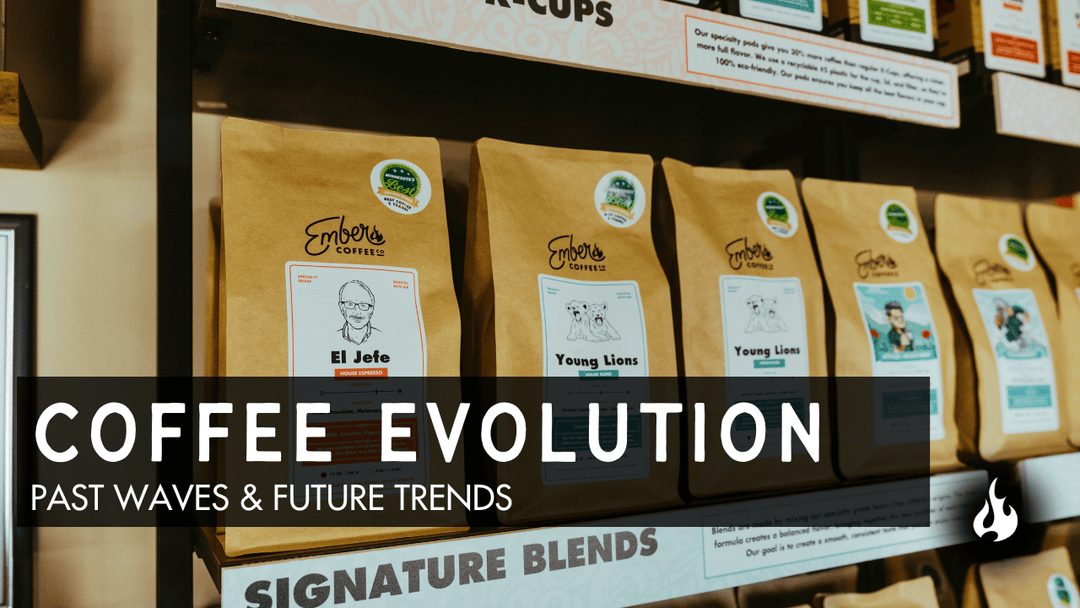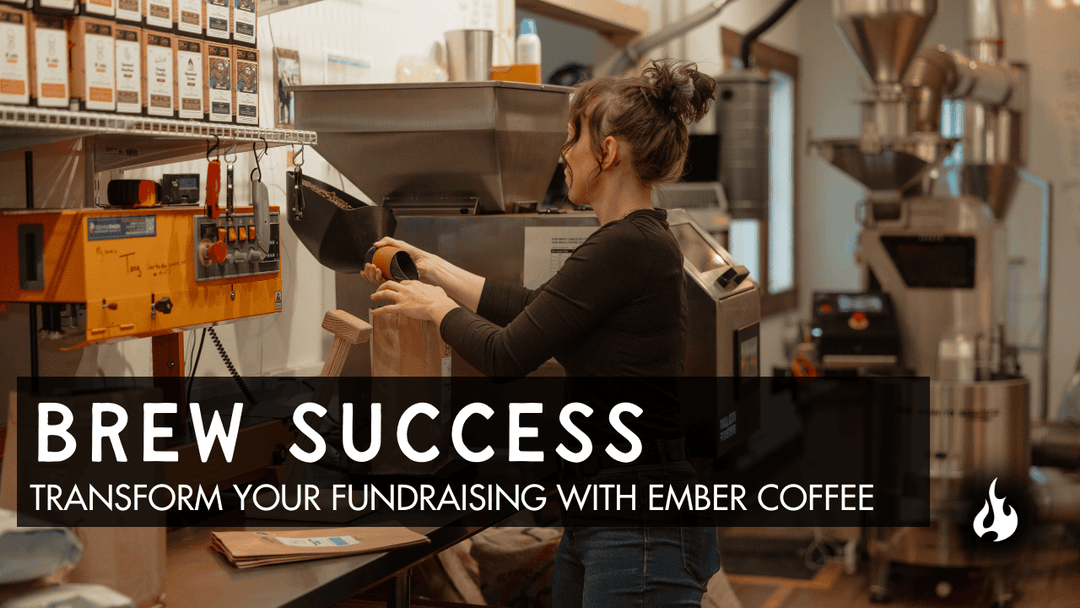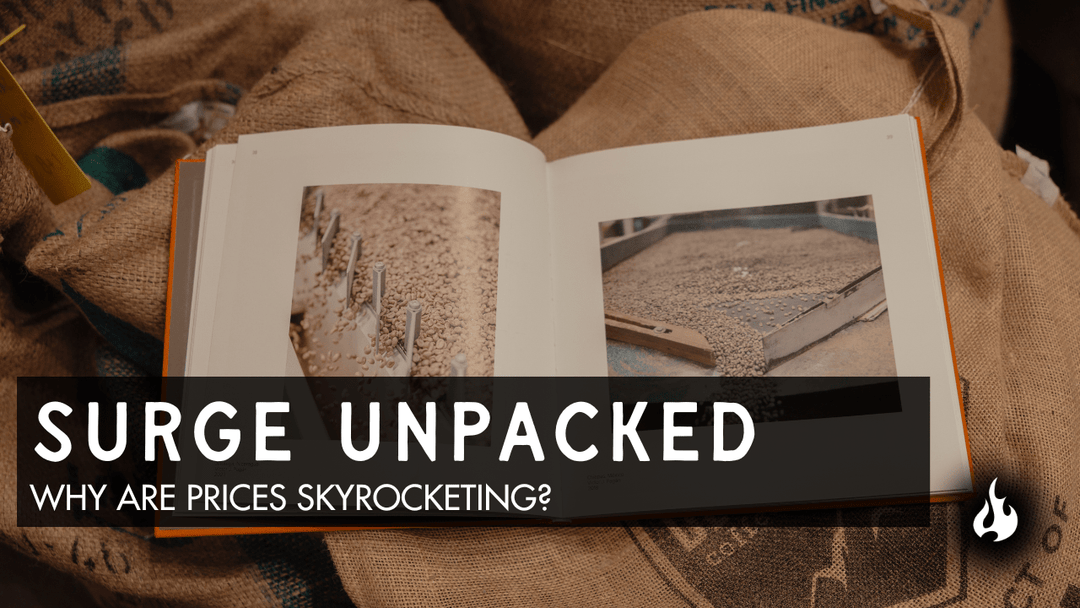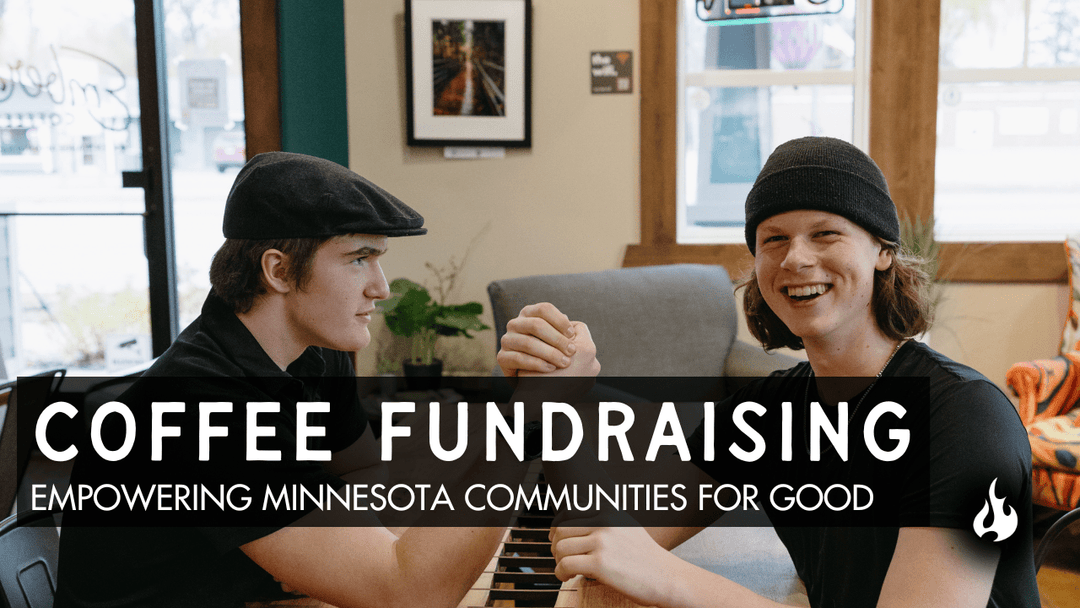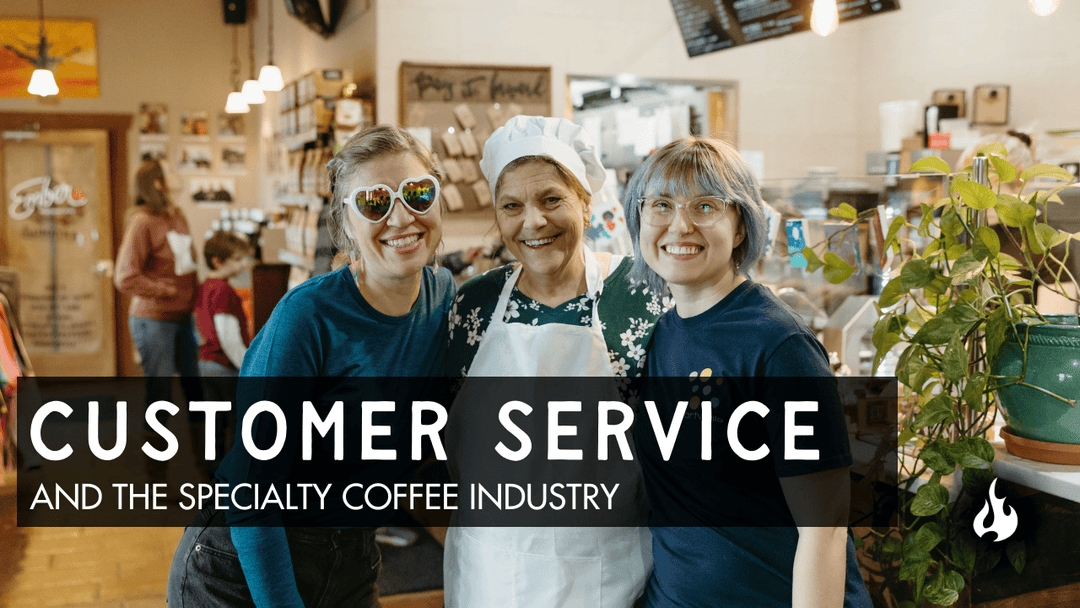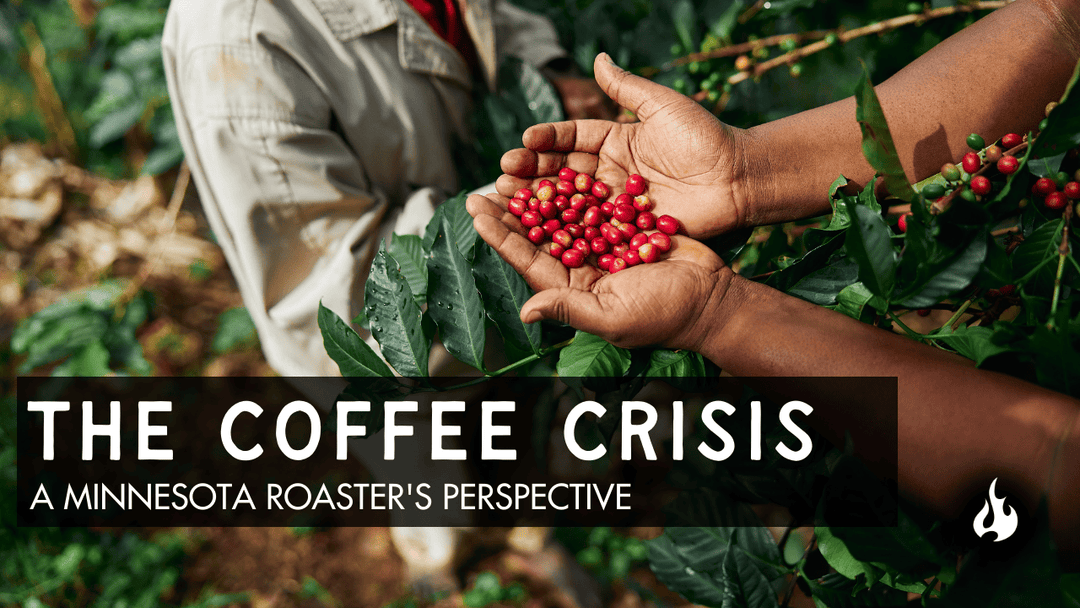Specialty Coffee Trends: How Coffee Became the New Norm
Let me tell you a story about a shift you might not have noticed—but one you’ve almost certainly tasted.
Specialty Coffee Trends: How Coffee Became the New Norm
Let me tell you a story about a shift you might not have noticed—but one you’ve almost certainly tasted.

Let me tell you a story about a shift you might not have noticed—but one you’ve almost certainly tasted.
A few weeks ago, I found myself in a cozy little café tucked into a bustling corner of Denver. It was one of those charming spots with mismatched chairs, exposed brick walls, and the faint hum of indie music playing overhead. The air smelled like freshly ground beans, and the soft whir of an espresso machine provided the soundtrack. I was waiting for my flat white, watching the world around me. The tables were packed. College students with laptops were cramming for finals, remote workers were typing furiously, and a retired couple sat in the corner, sipping cappuccinos while passionately debating the merits of oat milk versus almond milk. It felt alive—buzzy and warm, like the first sip of coffee on a crisp fall morning.
But then something caught my eye. I glanced at the drink board above the counter, and that’s when it hit me. There wasn’t a single mention of “regular coffee.” Not one. Instead, the chalkboard was a lineup of pour overs, cold brews, macchiatos, nitros, and a dozen other specialty drinks I’d need a barista to explain. It wasn’t just a menu—it was a statement.
That’s when I realized: something had shifted. Specialty coffee wasn’t the niche option anymore. It wasn’t the quirky alternative for coffee geeks. It had become the main event. People didn’t just want coffee; they wanted an experience, a story in a cup.
And as I sat there, sipping my perfectly steamed flat white and soaking in the energy of the café, I knew this wasn’t just a passing trend. This was a movement. Something fundamental had changed about how we drink coffee—and the data is starting to prove it. Specialty coffee is no longer the "other option." It's the norm, reshaping the way people connect, consume, and caffeinate.
The question now isn’t whether this shift is happening—it’s how far it will go.

A Shift in the Coffee Landscape
The tipping point has arrived: specialty coffee now surpasses traditional coffee in daily consumption across the U.S., according to the National Coffee Association’s 2025 Specialty Coffee Report. For the first time, 46% of American adults reported drinking specialty coffee yesterday, edging out the 42% who opted for traditional drip or diner-style coffee.
Think about it: in a country once synonymous with bottomless diner mugs and quick gas station coffee, more people are now choosing lattes, cold brews, espressos, and locally roasted coffee. From third-wave coffee shops to brewing at home with pour-overs and French presses, specialty coffee has reshaped how Americans enjoy their daily cup.
This isn’t just a passing trend—it represents an 84% surge in specialty coffee consumption since 2011, when only 25% of Americans preferred it. In just over a decade, what started as a niche for coffee enthusiasts has become the new standard for nearly half the adult population. Whether it’s the draw of intricate flavor profiles, ethically sourced beans, or the desire for a more elevated experience, specialty coffee has cemented its place in American culture.
So, What Exactly is Specialty Coffee?
Specialty coffee is more than a drink—it’s an experience. It includes espresso favorites like lattes and cappuccinos, the smooth richness of cold brew and nitro, and premium drip coffee made with high-quality, carefully sourced beans. It’s coffee crafted with care and innovation, focusing on quality at every step.
But it’s not just about what’s in your cup—it’s about the journey. It begins with farmers growing beans on sustainable farms, continues with roasters unlocking unique flavor profiles, and ends with baristas perfecting each pour. In Minnesota, local coffee roasters like Ember Coffee in Big Lake bring this craft to life, offering fresh, high-quality beans and a deep connection to the community.
From coffee roasters near Minneapolis to cozy Minnesota coffee shops, specialty coffee is all about connecting people with their perfect cup. Whether you’re sipping a pour-over at a local roastery or enjoying fresh coffee at home, specialty coffee invites you to savor every drop. It’s more than caffeine—it’s a sensory experience worth slowing down for.
Looking for the best coffee in Minnesota or fresh, locally roasted coffee near you? Specialty coffee brands like Ember are redefining the coffee culture, one cup at a time.

Why the Shift? Let’s Dive In
Younger Adults Are Leading the Charge
Picture this: a 28-year-old professional walks into a café, scanning the menu for single-origin pour-overs or oat milk lattes. They’re not just looking for caffeine; they’re after an experience—quality beans, crafted with care, and a story behind every cup. This is the reality of younger adults today.
According to the report, 64% of people aged 25–39 drank specialty coffee last week, the highest percentage among any age group. These are the same people who grew up seeing Starbucks redefine coffee culture and third-wave cafés bring artisanal brewing into the mainstream. Specialty coffee isn’t just a trend for them; it’s a lifestyle.
Interestingly, that number dipped slightly from 66% the previous year, but it’s still a clear sign of what matters to younger generations. They crave **quality, variety, and experience**—something far beyond a standard cup of joe. They want coffee that speaks to them, whether it’s a cold brew infused with lavender or a perfectly crafted cappuccino.
The West Is Best (For Now)
If you’re looking for the epicenter of specialty coffee, head west. The Western U.S. is still leading the charge, with 58% of adults enjoying specialty coffee last week. It’s no surprise—places like Seattle and Portland have been synonymous with coffee culture for years. From bustling artisanal roasters to cozy corner cafés, the West has long set the standard.
But here’s the twist: the rest of the country is catching up. Both the Northeast and South boast 55%, while even the Midwest, once a stronghold for percolators and diner coffee, has climbed to 50%. This steady rise shows that specialty coffee is no longer a coastal luxury—it’s a national obsession. From urban hubs to small-town coffee shops, the taste for high-quality beans is spreading everywhere.
Coffee Shops Matter, But Home Brewing Reigns Supreme
Imagine the smell of freshly brewed coffee filling a kitchen on a quiet Sunday morning. That’s where most specialty coffee drinkers are enjoying their favorite drinks—at home. In fact, 74% of specialty coffee drinkers make their coffee at home, a sign that brewing culture has gone mainstream. From pour-overs to French presses and AeroPresses, people are mastering the art of café-quality coffee in their own kitchens.
That doesn’t mean coffee shops are out of the picture—far from it. 35% of past-day specialty coffee drinkers still got their cup outside the home, keeping cafés buzzing with energy. However, the biggest growth has been in home brewing, fueled by access to high-quality beans, better brewing equipment, and a growing desire for control and customization.
Think about it: the third wave of coffee has moved from niche cafés to the average household. It’s no longer just about sipping a flat white in a trendy café; it’s about perfecting your own recipe with freshly ground beans and the right amount of bloom time. Specialty coffee has become personal.
Medium Roast Takes the Crown
Not long ago, dark roasts were the go-to choice for specialty coffee drinkers. The bold, smoky flavors were a favorite, often masking imperfections in lower-grade beans. But things have changed. Today, medium roast reigns supreme, with 62% of drinkers preferring it—a 35% increase since 2020.
Why the shift? Medium roast offers balance. It brings out the unique flavors of high-quality beans, like the floral notes of Ethiopian coffee or the chocolatey tones of Colombian varieties. As coffee lovers refine their palates, they’re leaning toward clarity and complexity over sheer strength.
Light roasts are also gaining traction, currently making up 15% of preferences. With more education about coffee and a growing appreciation for its delicate, fruity profiles, light roasts are expected to rise in popularity. The evolution of specialty coffee drinkers is clear—they’re seeking more sophisticated, high-quality options.
Coffee as a Wellness Ally
Coffee is no longer just a caffeine fix—it’s becoming an integral part of health and wellness routines. In fact, 61% of specialty coffee drinkers believe coffee is good for their health. Beyond antioxidants and mental clarity, the ritual of brewing and sipping coffee offers a meaningful pause in busy lives.
Whether it’s a mindful morning pour-over or an afternoon latte with friends, coffee has transitioned from a guilty pleasure to a source of comfort, energy, and wellness. It’s not just about the cup—it’s about the experience, the connection, and how it makes you feel.
Brewing Specialty Coffee at Home
The way people brew coffee at home is transforming as part of coffee’s third wave, where quality and experience take center stage. Specialty coffee, especially from Minnesota coffee roasters like those near Big Lake and Minneapolis, is influencing how people approach their daily brews.
Here’s a breakdown of brewing trends among today’s specialty coffee drinkers:
- Drip Coffee Makers lead at 36%, offering reliability and simplicity for those who want no-fuss brewing.
- Single-Cup Brewers (22%) deliver customization and convenience, perfect for busy mornings.
- Ready-to-Drink Bottles (21%) cater to on-the-go lifestyles, blending premium quality and portability.
- Cold Brew (20%) continues to grow in popularity for its smooth, refreshing flavor, especially during warmer months.
- Espresso Machines (15%) show that some enthusiasts are investing in café-quality beverages at home.
- Instant Coffee (10%) remains a nostalgic classic for simplicity lovers.
Minnesota coffee shops and local roasteries are also playing a big role in this movement. High-quality, locally roasted coffee beans have made it easier to enjoy specialty-grade coffee at home. Whether you’re brewing with a drip coffee maker, perfecting a shot of espresso, or experimenting with cold brew, the options are endless.
Coffee isn’t just a drink—it’s an expression of personal taste and a lifestyle. From local roasters near Minneapolis offering fresh coffee to Minnesota coffee shops providing unique experiences, the third wave of coffee is about celebrating quality, no matter how you brew it.
If you're in Minnesota, explore local coffee roasters near Big Lake or Minneapolis for some of the best coffee the state has to offer. Whether you're seeking the best coffee in Minnesota or looking for local roasted coffee to elevate your home brewing game, one thing is certain: coffee culture is here to stay, and it’s better than ever.

Most Popular Espresso-Based Drinks
Espresso-based drinks continue to dominate as the favorites among specialty coffee drinkers. This week, the classic espresso holds its place as the top choice, accounting for 18% of orders. Simple, strong, and timeless, it remains the foundation of nearly every café menu. Close behind, the latte and cappuccino each garnered 17% of the spotlight, proving that the balance of espresso and milk is as beloved as ever.
Other favorites, like the Americano at 11% and the chocolate-infused mocha at 10%, reflect how drinkers are seeking variety without straying too far from tradition. Meanwhile, the macchiato (9%) and the creamy flat white (5%) continue to appeal to those who enjoy a more nuanced flavor profile. What’s old is new again—espresso is the backbone of coffee culture, and its versatility keeps it relevant.
Top Non-Espresso Specialty Beverages
For those who prefer something different, non-espresso drinks are carving out their own space in the coffee world. The rise of cold brew taps into the growing demand for smoother, less acidic flavors, especially among younger coffee lovers. Frozen blended coffee has become a go-to treat during warm afternoons, offering a dessert-like experience in a cup. Meanwhile, nitro coffee, with its creamy, velvety texture and unique draft-style presentation, feels like the future of cool coffee innovations.
These drinks are especially popular in hotter climates and among adventurous consumers looking to break free from the traditional espresso framework. As coffee trends evolve, the non-espresso category is poised for even more exciting developments. Whether it’s a chilled brew or a nitrogen-infused surprise, there’s no shortage of ways to enjoy a great cup of coffee.

What This Means for Cafés and Coffee Professionals
If you own a café, roast beans, or craft drinks behind the bar, this shift in the coffee world is your green light to take action. Specialty coffee isn’t just the future—it’s already here, and customers are waiting for you to catch up. The coffee landscape is evolving, with consumers demanding more than just a caffeine fix. They’re seeking quality, experience, and connection in every cup.
Picture this: a customer walks into your café, scanning the menu for something beyond the standard drip coffee. They’re looking for a story—where the beans came from, how they were roasted, and what makes your brew special. More than ever, people care about what’s in their cup and the craft that brought it to life. Are you ready to meet their expectations?
Here’s how you can embrace this shift and thrive in the era of specialty coffee:
- Highlight your roast levels and origins. Customers are becoming educated coffee drinkers. They want to know if your beans are single-origin from Ethiopia or a blend with tasting notes of chocolate and citrus. Make your offerings transparent and let your story shine through—this is what sets you apart.
- Invest in variety. While espresso classics like cappuccinos and lattes remain staples, the demand for innovation is growing. Cold brew, nitro coffee, pour-over, and high-quality drip are no longer just trendy—they’re expected. Expanding your menu gives customers the chance to explore and keeps them coming back.
- Focus on education. Specialty coffee is as much about knowledge as it is about flavor. Train your baristas to share that knowledge confidently and passionately. Teach customers about brewing methods, flavor profiles, and the care that goes into each cup. The more they learn, the more they’ll connect with your brand and trust your expertise.
- Celebrate the home brewer. With more people taking up coffee brewing at home, now’s the time to support their journey. Offer tools like grinders, pour-over kits, and high-quality beans. Provide brewing tips or host classes to build a sense of community. Being their guide in their coffee journey transforms your café into more than a stop for coffee—it becomes part of their lifestyle.
This isn’t just a business about serving drinks anymore. It’s about fostering a culture. Specialty coffee has taken the lead as a movement that prioritizes quality, sustainability, and the stories behind the beans. When you adapt to this shift, you’re not just keeping up with the market—you’re building lasting relationships with customers who value the same things you do.
Coffee’s evolving—and so are we.
Whether you’re brewing at home, behind the bar, or just starting to explore specialty coffee, we’re here to be part of the journey.
For everyday coffee lovers: come taste what intentional coffee can feel like.
For home brewers: we share your love for the details—let’s keep learning and experimenting together.
For cafés: let’s keep pushing the culture forward, one cup, one conversation at a time.
👉 Explore our coffees | Partner with us | Visit the café – Let’s brew something better, together.
